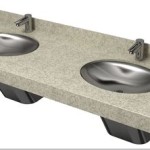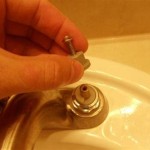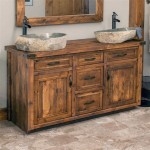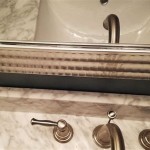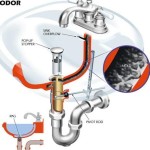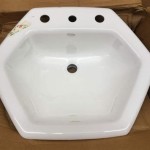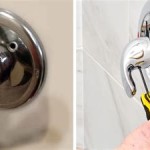Can You Hook Up Two Bathroom Fans to One Ventilation Fan?
The question of whether two bathroom exhaust fans can be connected to a single ventilation fan is a common one, particularly in situations where homeowners are looking to improve ventilation or simplify ductwork. The answer, while seemingly straightforward, depends on several factors, including the size and power of the ventilation fan, the length and configuration of the ductwork, and local building codes. Understanding these factors is crucial before undertaking such a project.
Proper ventilation in bathrooms is essential for removing moisture, odors, and pollutants. Exhaust fans help prevent mold and mildew growth, which can damage building materials and negatively impact indoor air quality. When considering connecting multiple bathroom fans to a single ventilation system, the primary goal should be to maintain or improve the effectiveness of the ventilation, not to compromise it.
Key Considerations Before Connecting Two Bathroom Fans to One Ventilation Fan
Several key points must be carefully considered before undertaking the project of connecting two bathroom fans to a single ventilation fan. These considerations relate to the current ventilation system, the new demands that will be placed upon it, and any potential issues that may arise.
Existing Ventilation Fan Capacity: The most critical aspect is determining whether the existing ventilation fan has sufficient capacity to handle the exhaust from both bathrooms. Ventilation fans are rated in cubic feet per minute (CFM), which represents the volume of air the fan can move in one minute. To determine the required CFM, one must consider the size of each bathroom. A general rule of thumb is that a bathroom requires at least 1 CFM per square foot of floor space. For example, a 50-square-foot bathroom would require a 50 CFM fan. If one bathroom is 50 square feet and the other is 70 square feet, the total required CFM would be 120 CFM. The existing ventilation fan must be rated for at least this amount, and preferably more to account for ductwork resistance.
If the existing fan is undersized, it will not effectively remove moisture from both bathrooms. This can lead to increased humidity levels, promoting mold and mildew growth. An undersized fan will also work harder, potentially shortening its lifespan and increasing its noise output.
Ductwork Design and Size: The design and size of the ductwork are also crucial. The ductwork must be properly sized to accommodate the increased airflow from two fans. Using undersized ductwork can restrict airflow, reduce the overall ventilation effectiveness, and potentially cause the ventilation fan to overheat. The length and complexity of the ductwork also affect airflow. Longer runs and multiple bends create more resistance, reducing the fan's ability to move air efficiently.
It is recommended to use smooth-walled ductwork, such as rigid metal or PVC, as it offers less resistance than flexible ductwork. Flexible ductwork, while easier to install, has ridges and corrugations that significantly reduce airflow. If flexible ductwork is unavoidable, it should be kept as short and straight as possible.
Backdraft Dampers: Installing backdraft dampers is essential to prevent air from one bathroom from flowing into the other when only one fan is operating. Backdraft dampers are one-way valves that allow air to flow in one direction only. They should be installed in each branch duct leading from the bathroom fans to the main duct. This prevents odors and moisture from one bathroom from being drawn into the other when only one fan is running. Without backdraft dampers, the system can effectively circulate air between the bathrooms, negating the benefits of ventilation.
Furthermore, backdraft dampers can help prevent drafts from entering the bathrooms when the fans are not in use. This is particularly important in colder climates, where drafts can significantly increase heating costs and reduce comfort.
Steps for Connecting Two Bathroom Fans to One Ventilation Fan
If the existing ventilation fan has sufficient capacity and the ductwork can be properly sized, connecting two bathroom fans to a single ventilation fan is feasible. The following steps outline the process:
Planning and Design: The initial step involves a thorough planning and design phase. This includes measuring the square footage of each bathroom to determine the required CFM, assessing the existing ventilation fan's capacity, and evaluating the current ductwork. A detailed plan should be created, outlining the ductwork layout, the location of backdraft dampers, and any necessary modifications to the existing system.
This phase should also include a review of local building codes. Some jurisdictions may have specific requirements for bathroom ventilation, including the allowable length and size of duct runs, the type of ductwork that can be used, and the need for inspections.
Ductwork Installation: The next step is to install the necessary ductwork. This involves connecting each bathroom fan to a main duct that leads to the ventilation fan. The ductwork should be sized appropriately to handle the combined airflow from both fans. It is generally recommended to use rigid metal or PVC ductwork for optimal airflow. If flexible ductwork is used, it should be kept as short and straight as possible.
When connecting the branch ducts from the bathroom fans to the main duct, use Y-connectors or gradual transitions to minimize turbulence and resistance. Avoid sharp bends, which can significantly reduce airflow. Securely fasten all ductwork connections with metal tape or clamps to prevent air leaks.
Installation of Backdraft Dampers: As previously mentioned, backdraft dampers are crucial for preventing air from flowing between the bathrooms. Install backdraft dampers in each branch duct, as close as possible to the bathroom fans. Ensure that the dampers are properly oriented to allow airflow in the direction of the ventilation fan. Test the dampers to verify that they open and close freely.
The quality of the backdraft dampers is important. Choose dampers that are durable, reliable, and designed to minimize resistance to airflow. Inspect the dampers periodically to ensure that they are functioning properly and are free from debris.
Fan Wiring and Electrical Considerations: The electrical wiring of the bathroom fans is another important consideration. Most bathroom fans are wired independently, with each fan having its own switch. When connecting two fans to a single ventilation system, it may be desirable to wire them together so that they operate simultaneously. Alternatively, each fan can retain its own switch, allowing for independent operation.
If the fans are to be wired together, ensure that the electrical circuit is capable of handling the combined load of both fans. Consult with a qualified electrician to determine the appropriate wiring configuration and to ensure that all electrical work is performed safely and in accordance with local codes. Consider using a timer switch to automatically turn off the fans after a set period of time, which can help save energy.
Testing and Verification: Once the ductwork and electrical connections are complete, thoroughly test the system to ensure that it is functioning properly. Turn on both bathroom fans simultaneously and verify that air is being exhausted effectively from both bathrooms. Check for any air leaks in the ductwork and seal them as necessary. Use an anemometer to measure the airflow at each exhaust vent to ensure that it meets the required CFM.
Listen for any unusual noises from the ventilation fan, which could indicate a problem with the ductwork or the fan itself. If any issues are identified, troubleshoot the system and make the necessary adjustments or repairs. Regularly inspect the system to ensure that it continues to function properly over time.
Potential Problems and Solutions
Despite careful planning and execution, several potential problems can arise when connecting two bathroom fans to a single ventilation fan. Understanding these problems and their potential solutions is essential for ensuring the long-term effectiveness of the ventilation system.
Insufficient Airflow: One of the most common problems is insufficient airflow, which can result from undersized ductwork, excessive ductwork length, multiple bends in the ductwork, or a weak ventilation fan. To address this problem, first inspect the ductwork for any obstructions or kinks. Ensure that the ductwork is properly sized and that any flexible ductwork is as short and straight as possible. Consider upgrading to a more powerful ventilation fan with a higher CFM rating. You can also reduce the resistance in the ductwork by using smoother ductwork materials and minimizing the number of bends.
Backdrafting: Backdrafting occurs when air from one bathroom flows into the other, negating the benefits of ventilation. This is typically caused by faulty or improperly installed backdraft dampers. Inspect the backdraft dampers to ensure that they are properly installed and functioning correctly. Clean the dampers regularly to remove any debris that may be preventing them from closing properly. Consider replacing the dampers with higher-quality units that are more reliable.
Excessive Noise: Connecting two bathroom fans to a single ventilation fan can sometimes result in increased noise levels. This can be caused by the fan working harder to move more air, or by turbulence in the ductwork. To reduce noise levels, ensure that the ventilation fan is properly sized for the combined airflow requirements of both bathrooms. Use insulated ductwork to dampen sound transmission. Install a noise reducer or silencer in the ductwork to further reduce noise levels.
Mold and Mildew Growth: If the ventilation system is not effectively removing moisture from both bathrooms, mold and mildew can grow. This is a sign of insufficient airflow or inadequate ventilation. Address this problem by improving the ventilation system's airflow, as described above. Clean any existing mold and mildew with a suitable cleaning solution. Consider installing a dehumidifier in each bathroom to further reduce humidity levels.
Properly addressing these key points will ensure that connecting two bathroom fans to a single ventilation fan is a viable solution for improving ventilation in the home, efficiently removing moisture, odors, and pollutants, thereby promoting a healthier indoor environment.
Hvac Talk Heating Air Refrigeration Discussion
Hvac Talk Heating Air Refrigeration Discussion

Hvacquick How To S Wiring 1 Fan Serving 2 Baths With Switch Per Bath Lights From Com

How To Use An In Line Exhaust Fan Vent Two Bathrooms Diy Family Handyman

Bathroom Exhaust Fan With Humidity Sensor On One Switch Home Improvement Stack Exchange
Can I Vent Multiple Bathroom Fans To The Same Hole Using Flexible Duct And Connectors Or Will They Blow Air Into Each Other Instead Of Venting Outside Quora

Hvacquick How To S Wiring 1 Fan Serving 2 Baths With Fd60em Timer Per Bath From Com

How To Wire A Bathroom Fan And Light On Separate Switches 14 Step Guide Home Inspector Secrets

Bathroom Exhaust Fan Light

Bathroom Exhaust Fans Building America Solution Center
Related Posts

